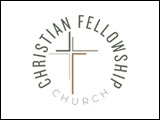Head lice is a perennial problem in children, spreading quickly when hats, combs or pillows are shared or heads come together. Some hair dressers report seeing lice – small 3 mm whitish insects which look like grains of rice with legs – on about every fourth child that comes in. Many parents panic when their child comes home from school with an itching scalp, and the initial reaction is a feeling of embarrassment that somehow they have been careless with keeping hair clean. This is a misconception – having head lice is not a result of poor hygiene or unsanitary home conditions; it is simply a bane of grade school existence. Once lice have been identified, it is of utmost importance to deal with the problem as soon as possible. Washing with normal shampoos will not get rid of head lice, but tea tree oil has been shown to be effective, as have several other essential oils. How does one begin the process of getting rid of lice, and is it a once-and-for-all procedure?
Lice are parasites that can only live on human scalps and thus they seek out the heads of people of any age. The problem is prevalent among children because they spend many days of each week in proximity with dozens of kids, and tend to be careless about sharing with friends. The only way lice spread, in fact, is through direct head-to-head contact. While persistent itching is a main symptom, a case of lice can only be confirmed by finding the insects or their tiny off-white oval-shaped eggs (nits).
Close to the scalp
Food for lice is blood which means they stick close to the scalp to stay alive, and about halfway through their life cycle (duration is about 35 days), female lice lay eggs in the cosy warm nest of human hair – and they don’t care if it’s clean or dirty, as long as it’s close to the blood supply so a meal is quickly forthcoming when they hatch. The trick is to break this cycle of reproduction which means getting rid of both lice and nits. The reason why a regular shampoo and washing is not effective is that lice are tenacious little things, clinging for dear life to hair shafts and shutting down breathing passages as water washes over them. Their eggs are stuck like glue to the hair close to the scalp and only a fair amount of force will cause them to detach.
Although head lice are a big nuisance, the problem is completely treatable. There are several options for treatment – prescription medication, over-the-counter products or natural remedies. All of them will demand repeat procedures because it is near impossible to kill both insects and eggs in one swoop. If any eggs remain, they will hatch quickly and the problem carries on.
Some medications that may be prescribed are malathion, benzyl alcohol or lindane, but these often come with side effects and seem harsh to the body especially if treatments have to be repeated. Some shampoos on the market are formulated to kill lice but that means they contain pesticides such as pyrethrin or permethrin which, too, can hurt the child’s tender scalp. Another consideration is that lice may have developed resistance to these pesticides because of overuse. Why not start with something gentler such as tea tree oil which has been found to be strong enough to kill lice?
Natural remedy
Tea tree oil comes from the leaves of a tree native to Australian coastal areas – and has been used there for many years to treat skin infections. It has been available in North America for a decade or more – used as a natural remedy for minor burns, insect bites and fungal infections. While applying any type of oil is seen as a way to smother or suffocate lice, tea tree oil contains a compound known as terpinen-4-ol which gives it some antiseptic potency.
To treat lice, you can either purchase shampoo that contains tea tree oil, or buy the oil itself and add it to regular preferably fragrance-free shampoo – two drops of oil for every ounce of shampoo. Wash hair with shampoo and rinse, then while hair is still wet, use a fine-toothed comb to collect any lice and nits you find, disposing of them in a airtight plastic bag. Repeat this for several consecutive days – until you are certain no insects or nits remain. Parents dealing with the problem should check their own hair and that of other people in the household, and wash all the infected child’s clothes, bedding and stuffed animals with soap and hot water with a few added drops of tea tree oil.
While there are other ways to use tea tree oil for lice, the above method is easy and effective. While tea tree oil is considered safe, the occasional person may have an allergy, so caution should be employed when using it. It should be noted tea tree oil is for external use only.



